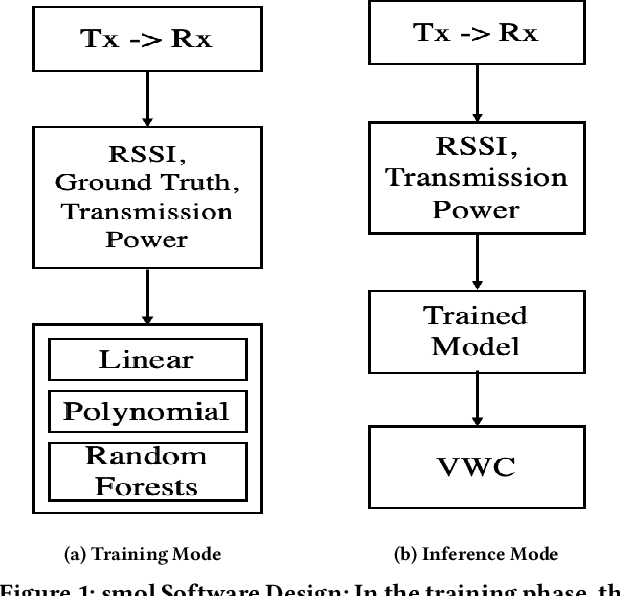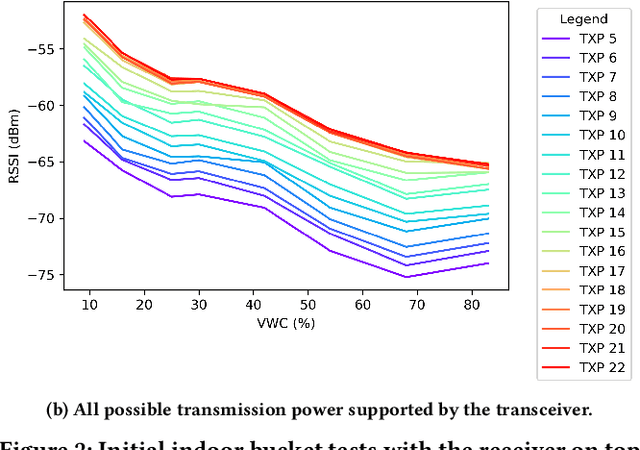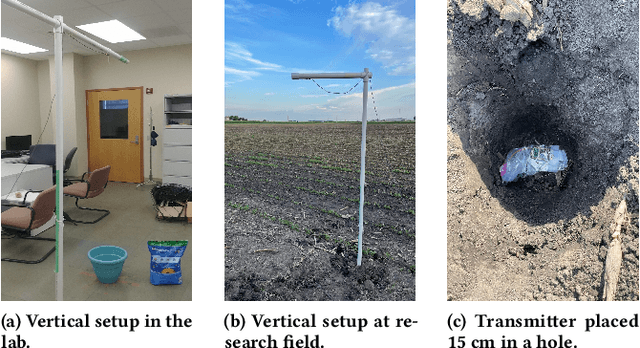Robin Kravets
Packet Reception Probability: Packets That You Can't Decode Can Help Keep You Safe
Jun 02, 2023Abstract:This paper provides a robust, scalable Bluetooth Low-Energy (BLE) based indoor localization solution using commodity hardware. While WiFi-based indoor localization has been widely studied, BLE has emerged a key technology for contact-tracing in the current pandemic. To accurately estimate distance using BLE on commercial devices, systems today rely on Receiver Signal Strength Indicator(RSSI) which suffers from sampling bias and multipath effects. We propose a new metric: Packet Reception Probability (PRP) that builds on a counter-intuitive idea that we can exploit packet loss to estimate distance. We localize using a Bayesian-PRP formulation that also incorporates an explicit model of the multipath. To make deployment easy, we do not require any hardware, firmware, or driver-level changes to off-the-shelf devices, and require minimal training. PRP can achieve meter level accuracy with just 6 devices with known locations and 12 training locations. We show that fusing PRP with RSSI is beneficial at short distances < 2m. Beyond 2m, fusion is worse than PRP, as RSSI becomes effectively de-correlated with distance. Robust location accuracy at all distances and ease of deployment with PRP can help enable wide range indoor localization solutions using BLE.
smol: Sensing Soil Moisture using LoRa
Oct 04, 2021



Abstract:Technologies for environmental and agricultural monitoring are on the rise, however, there is a lack of small, low-power, and lowcost sensing devices in the industry. One of these monitoring tools is a soil moisture sensor. Soil moisture has significant effects on crop health and yield, but commercial monitors are very expensive, require manual use, or constant attention. This calls for a simple and low-cost solution based on novel technology. In this work, we introduce smol: Sensing Soil Moisture using LoRa, a low-cost system to measure soil moisture using received signal strength indicator (RSSI) and transmission power. It is compact and can be deployed in the field to collect data automatically with little manual intervention. Our design is enabled by the phenomenon that soil moisture attenuates wireless signals, so the signal strength between a transmitter-receiver pair decreases. We exploit this physical property to determine the variation in soil moisture. We designed and tested our measurement-based prototype in both indoor and outdoor environments. With proper regression calibration, we show soil moisture can be predicted using LoRa parameters.
 Add to Chrome
Add to Chrome Add to Firefox
Add to Firefox Add to Edge
Add to Edge